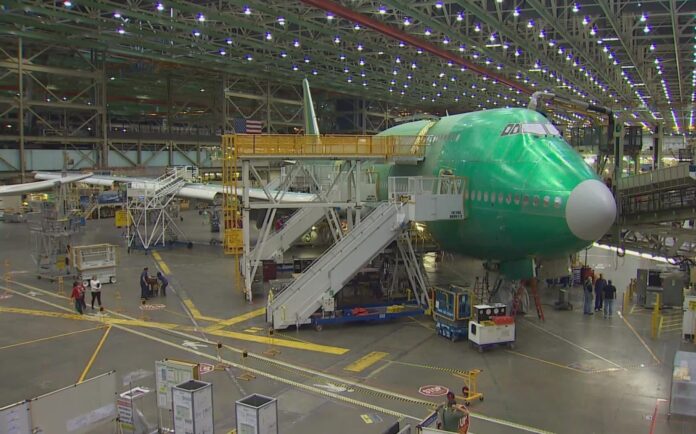The aircraft assembly line stands as a testament to precision engineering and meticulous planning—a symphony of processes that transform individual components into a fully functional aircraft. From the arrival of raw materials to the rollout of a completed aircraft, the assembly line represents the culmination of innovation, efficiency, and engineering prowess.
At the heart of the assembly line lies meticulous planning and logistics. Manufacturers carefully orchestrate the supply chain, ensuring the timely arrival of raw materials, components, and sub-assemblies. The seamless coordination of suppliers and logistics is crucial in maintaining a continuous flow of parts to the assembly line.
The assembly process begins with the fabrication of individual components. Whether it’s wings, fuselage sections, or engine components, each part undergoes meticulous manufacturing processes—machining, molding, or casting—to meet precise specifications. Quality control measures at this stage ensure that components meet stringent standards before integration into the assembly line.
Sub-assemblies, comprised of multiple components, are constructed separately before being integrated into the main assembly line. These sub-assemblies—such as landing gear assemblies, avionics systems, and wing sections—are meticulously crafted and tested to ensure compatibility and functionality.
The integration of components into the aircraft follows a structured sequence. Fuselage sections, wings, tail assemblies, and propulsion systems are meticulously aligned and assembled with precision. Automated systems and robotic arms assist in tasks that demand accuracy and repeatability, enhancing efficiency and consistency throughout the assembly process.
Aircraft systems integration involves the installation of avionics, wiring, hydraulics, and fuel systems. Skilled technicians meticulously connect and test these intricate systems to ensure functionality, safety, and compliance with aviation standards. Rigorous testing and quality checks are performed at each stage of installation.
Final assembly marks the culmination of the intricate assembly line process. The aircraft, taking shape as components seamlessly come together, undergoes comprehensive testing, including structural integrity checks, system functionality tests, and avionics calibration. Every aircraft is subjected to exhaustive quality assurance protocols to ensure airworthiness and safety.
Automation plays a pivotal role in modern aircraft assembly lines. Robotics, automated guided vehicles (AGVs), and computerized systems streamline processes, minimize human error, and enhance efficiency. Automated riveting, painting, and inspection systems contribute to increased productivity and precision.
Lean manufacturing principles drive continuous improvement in assembly line efficiency. Manufacturers implement lean methodologies, reducing waste, optimizing workflows, and maximizing resource utilization. Continuous refinement of processes ensures that the assembly line operates at peak efficiency.
Modularity and standardization play a crucial role in modern assembly lines. Standardized components and modular designs facilitate interchangeable parts across aircraft models, reducing production complexities and enabling swift reconfiguration based on customer requirements.
Collaboration between engineers, technicians, and quality control specialists is pivotal in ensuring seamless operations on the assembly line. Constant communication and feedback loops enable quick resolution of issues, fostering a culture of continuous improvement.
Environmental sustainability is increasingly becoming a focus in aircraft assembly. Manufacturers strive to reduce waste, energy consumption, and emissions through eco-friendly practices. Recycling initiatives, energy-efficient technologies, and sustainable material choices contribute to greener assembly line operations.
The future of aircraft assembly lines holds the promise of further advancements in automation, digitization, and sustainability. Industry 4.0 technologies, including artificial intelligence, augmented reality, and digital twins, are poised to revolutionize assembly line operations, offering enhanced efficiency and predictive maintenance capabilities.
The aircraft assembly line, a marvel of engineering and logistics, exemplifies the pinnacle of manufacturing excellence. From the meticulous assembly of components to the culmination of a fully functional aircraft, the assembly line stands as a testament to human ingenuity, precision, and collaborative efforts in shaping the future of aviation.
























